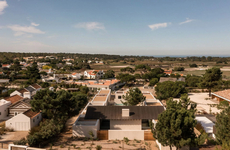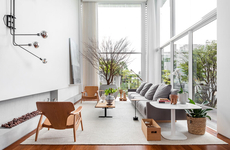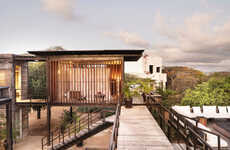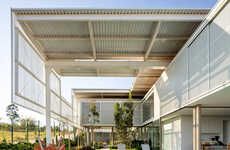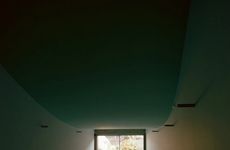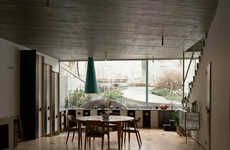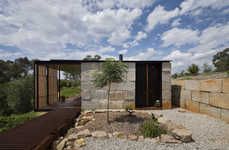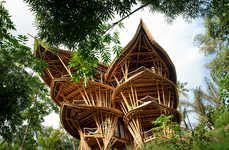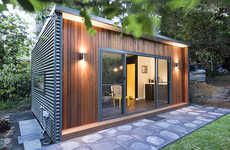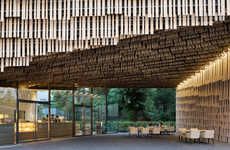
Miramar House is Located in a Picturesque Portuguese Town
Rahul Kalvapalle — May 15, 2014 — Eco
References: e348.blogspot.pt & gizmag
Miramar House is an ingenious passively cooled home located in the town of Vila Nova de Gaia in Portugal. It takes its name from the popular seaside village not too far from its location.
The house was constructed by E348 Arquitectura using only local building methods and inexpensive, easily available materials. The home's interior and exterior styles are designed to suit the local climate and architectural character.
The most noteworthy feature of Miramar House is the inclusion of several massive hand-operated wooden shutters located along the upper floor facade. When opened, the shutters allow breeze to permeate the interior and keep the temperature comfortable during the summer. Perforated wall sections located around the house allow for natural ventilation.
The roof of Miramar House is equipped with a solar hot water array which both provides hot water while also taking care of underfloor heating.
The house was constructed by E348 Arquitectura using only local building methods and inexpensive, easily available materials. The home's interior and exterior styles are designed to suit the local climate and architectural character.
The most noteworthy feature of Miramar House is the inclusion of several massive hand-operated wooden shutters located along the upper floor facade. When opened, the shutters allow breeze to permeate the interior and keep the temperature comfortable during the summer. Perforated wall sections located around the house allow for natural ventilation.
The roof of Miramar House is equipped with a solar hot water array which both provides hot water while also taking care of underfloor heating.
Trend Themes
1. Passive Cooling Homes - The trend of constructing homes that utilize natural ventilation and passive cooling techniques, such as using shutters and perforated wall sections, to reduce reliance on mechanical cooling systems.
2. Local Building Methods - The trend of using locally-sourced materials and building methods to create sustainable and eco-friendly structures that are cost-effective and easily accessible.
3. Solar-powered Infrastructure - The trend of incorporating solar power systems, such as solar arrays on roofs, to provide renewable energy and reduce dependence on traditional energy sources.
Industry Implications
1. Architecture and Construction - The architecture and construction industry can explore innovative design and construction methods that focus on passive cooling techniques and the use of local materials for sustainable and eco-friendly homes.
2. Renewable Energy - The renewable energy industry can capitalize on the growing demand for solar power systems in residential buildings, providing opportunities to develop and install solar hot water arrays and other solar-powered infrastructure.
3. Sustainable Living - The sustainable living industry can promote and provide solutions for eco-friendly homes that prioritize natural ventilation and energy-efficient design, catering to individuals and communities seeking environmentally-conscious living options.
6.7
Score
Popularity
Activity
Freshness


